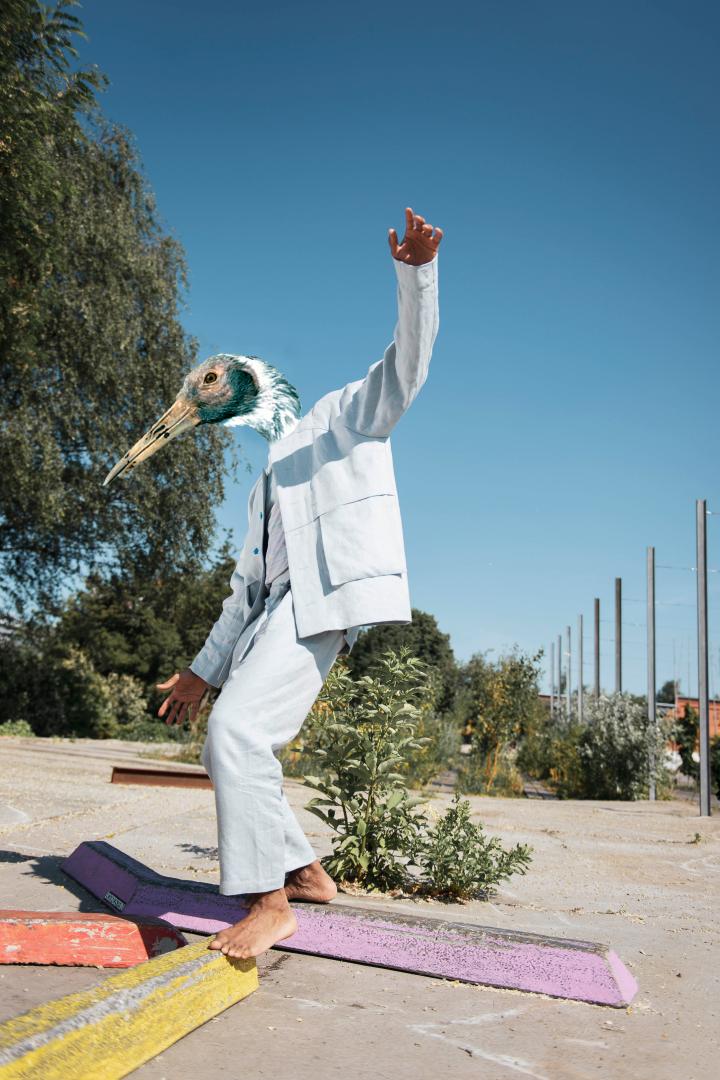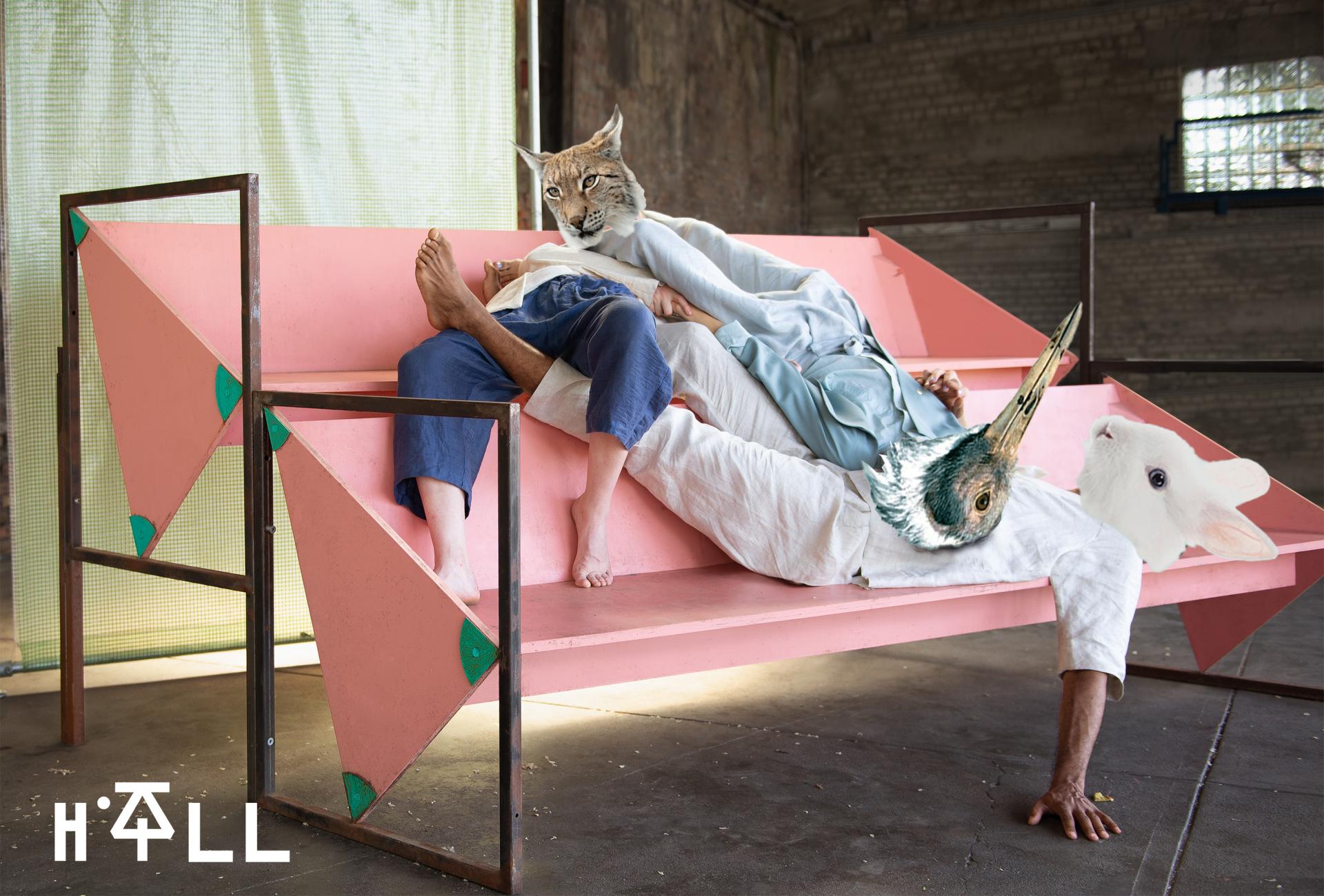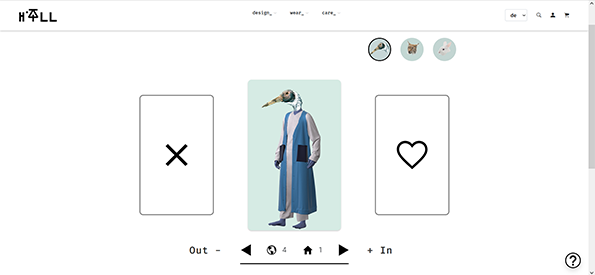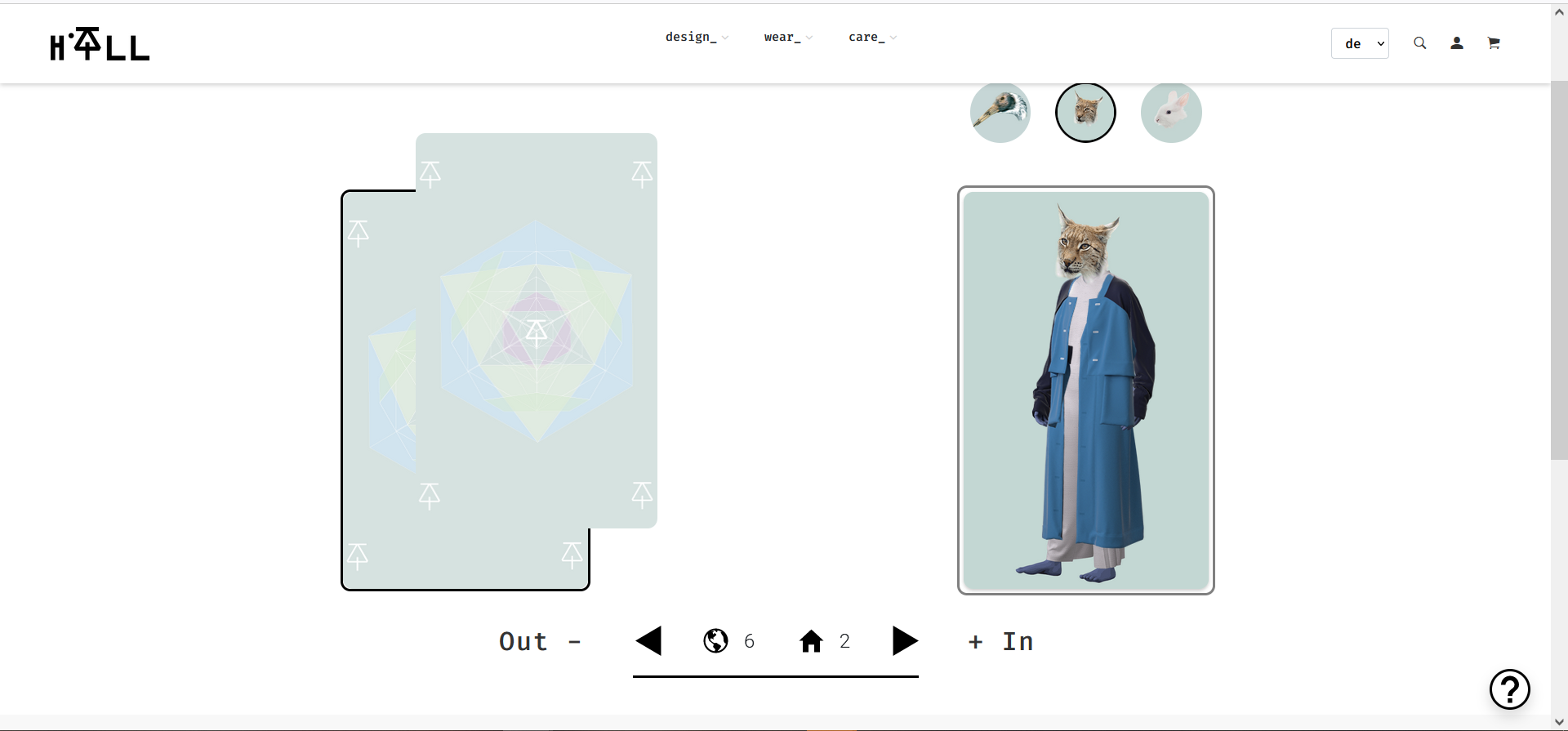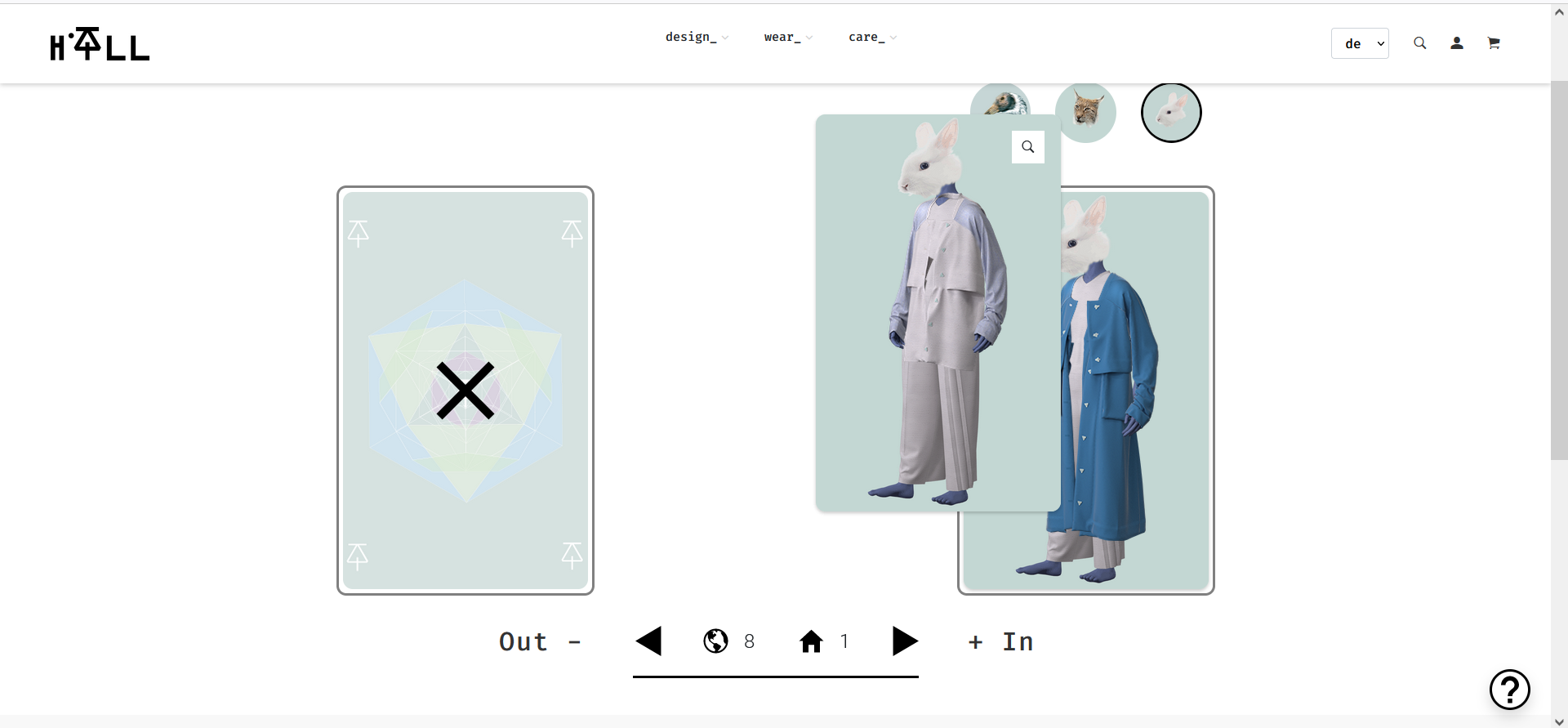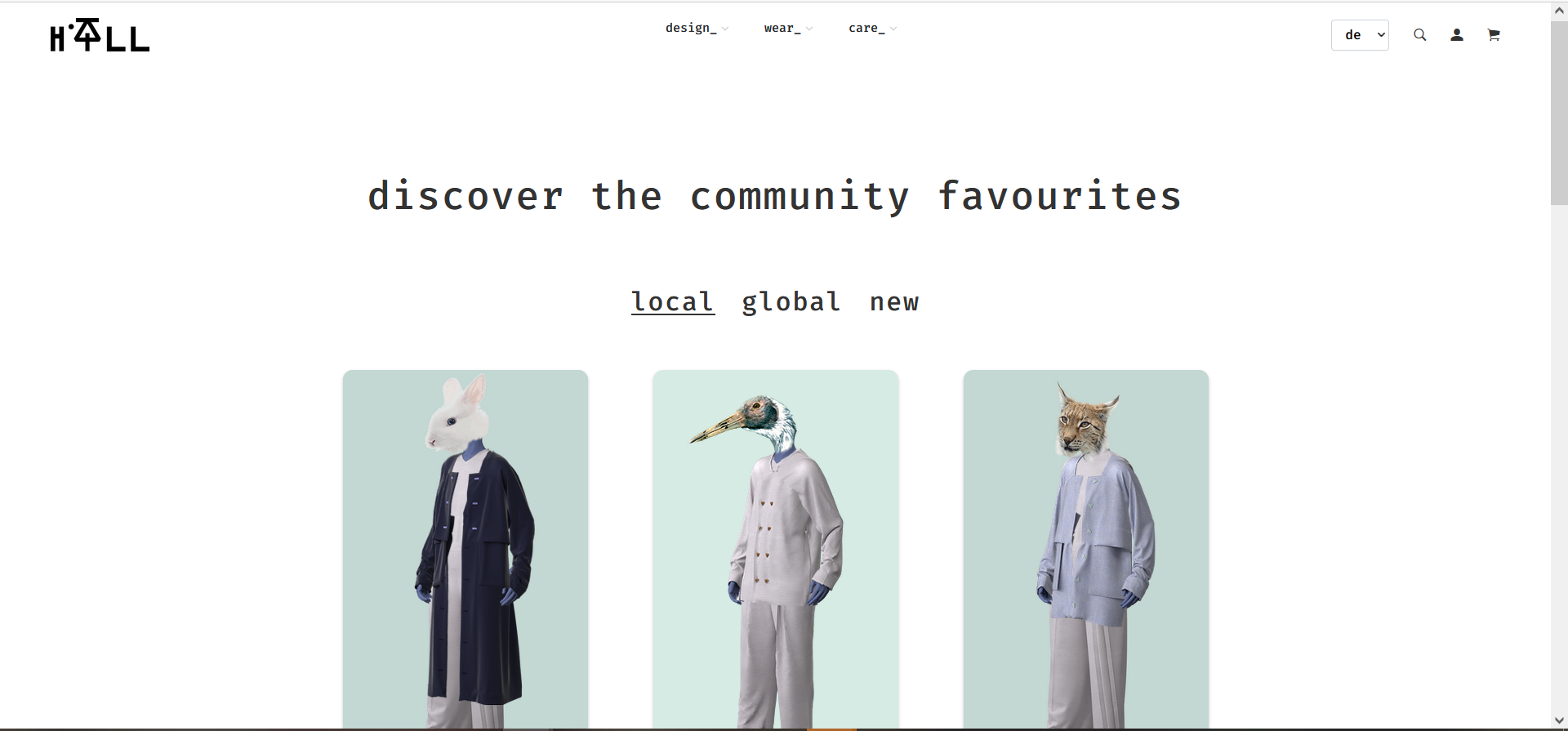House of ALL: All are fashion designers.
Basic information
Project Title
Full project title
Category
Project Description
We believe in strong communities & the end of ownership. Our goal is to cocreate a distributed fashion design network with global data distribution and local micro production. Imagine a world of open source designs and real cocreation whereby all can participate in designing and making the clothes they want to wear. Materials are sourced locally, regional fashion develops. The transormation requires a shift in consumerism, breaking the global supply chain and involves empowering communities.
Geographical Scope
Project Region
Urban or rural issues
Physical or other transformations
EU Programme or fund
Which funds
Description of the project
Summary
"Fashion is the result of a resonance experience. It is strongly dependent on everything that surrounds us every day. The more we experience, the more often we like to change our style."
The vision: clothes as commons - local craftsmanship is celebrated and we value and reconnect with what surrounds us daily: textiles.
"If we organize all clothes together - like a pool of commons - who designs them?"
All are designers - "house of" refers to the commonly used term in front of a fashion house (brand).
With this circular model, we encourage everyone to participate in creating sustainability as a community whilst supporting regional textile production. With the help of digitality, House of ALL promotes 3 concepts to co-create local fashion eco systems:
Distributed Design is the process whereby design data is shared globally to be accessed and produced locally. The files are published Open Source in a repository so anyone can contribute & improve or add.
Community Supported Economy (CSX) - better known from Solidarity Farming (CSA) - is transferred here to the clothing sector: all members of the community share the costs for sustainable clothing to make it accessible to all. Similar to a sharing model, with the important difference that community members gain insight into the operations and finances of the company, have a say in many decisions and shape the concept collaboratively in many ways.
Our first simple take on participation is an online card game we developed: highest ranked items are released for production on demand. If you set up an anonymous account with your postcode, your votes will be counted and assigned to your region. This way, location-specific preferences can be discovered. At regular intervals, the top 3 are pushed into the shop. There you can either buy your favourite item or, even better, select it for temporary use. The showcase displays the top ranked styles regionally and globally. Here you can also view latest additions to the game.
Key objectives for sustainability
DESIGN - WEAR - CARE
These 3 phases refer to the use of textiles and by design we address of all these with our holistic approach:
DESIGN
Sustainability starts with designing for cycles and longevity:
- Modularity
All design is based on a modular system to achieve interoperable patterns and room for personal choices. - Snaps
All buttons are removable to protect fabric through many care cycles. They are customizable and available to d/l. - Monomaterial Strategy
To enable circular processing all materials used have the same recycling properties. They are preferably biodegradable, unless otherwise stated. - Circular
For more circularity we use reusable components of small size. That way we can easier up-cycle textile waste. - Design it together
Designing for longevity also means to add emotional value. We achieve this by our community based design approach and implementing customizable components. You can also contribute to the design repository considering the circular design principles. - Durability
Keeping clothes in the cycle for as long as possible is the most sustainable option. All creations are made from finest selected cloth and quality checked after production.
WEAR
By offering all items through temporary ownership you can change styles more often without piling up your closet. The modular designs leave room for personality: add your own snaps or wear your special edition.
Once you wish to change styles you return unwanted items, The clothes stay in the loop for longer and don't end up on landfills accidentally. We envision thriving communities who take collective care of the garments they created together.
CARE
Community supported / commoning is at the centre of our actions.
We want to rediscover our clothes as a cultural asset. Therefore we offer events around the common care of clothes and around making. Laser your own snaps or learn to cut the fabrics ready for sewing. Reconnecting with processes aids valuation of things.
Key objectives for aesthetics and quality
SOFTWARE
The card game UI follows a minimal approach with attention to detail. The concept of modularity is consistently adopted. The card reverse resembles a typical card deck look whilst consisting of the Platonic Solids. These are the building blocks of the universe as per Plato just as the elementary collection is the basis for a growing database.
Players can pick their favourite Spirit Guide avatars adding a playful touch for the experience of individuality.
HARDWARE
For the elementary collection we have opted for high quality fabrics that give the sophisticated look we want to achieve matching Hamburgs northern style.
By offering customization to some degree users can play with modules and have an individual experience.
Key objectives for inclusion
"How can fashion be for all? Usually brands address a type by picking models and sizes."
SOFTWARE
The card game is supposed to involve even people who have no design affinity in decision taking. On another level people can contribute by changing design files in the repository. With some more development these designs can also be played through the card game.
By offering avatars people can identify with the pictured styles by drawing them into a fantasy world. We wanted to avoid certain gender and skin tone looks and decided to go for the avatar with a blue skin tone. The pictured size has been chosen so details of clothing can be identified best. Due to cost factors not more than one size is animated so far.
Adopting the 3D aesthetic we prepare for future developments of online design configurators but also again create inclusiveness.
HARDWARE
House of ALL has developed a different sizing system to avoid body shaming and include all genders.
So far the clothes are made for a variety of body shapes with modularity leaving room for individual styles. We offer co creation workshops to involve people not only on a software level but hands on in the process of creation bonding everyone with the items they later wear.
ECONOMIC
The CSX approach implies that the costs are shared amongst all community members, and those who can afford it pay more than those who cannot. It also means that prizing is adapted depending on size of community and costs of production. We aim to grow an active CSX community whereby members decide over monthly fees but at the moment we set prizes and review them regularly. Introducing this new concept is a process we need to learn ourselves, too. The first step is radical transparency though.
Results in relation to category
The results so far can only be measured in quality since we only just entered the market. Forecasting the impact is based on theory but we are convinced that local preferences in fashion will show up and hope that in future the regional capacities of production and textile artisans will regain focus to achieve what we think utopia would look like.
As a next development stage local textile artisans can add to a material library so the design files off the repository can be matched with local materials. This is a process over time so that the impact will only be visible in perhaps 3 years time.
Together with Fab City Hamburg e.V. we are about to start a research project through which we start measuring material flows and behaviour.
How Citizens benefit
The ongoing implementation involves local people who become part of the House of ALL community. By joining co creation workshops people will hopefully add to the design repository and continue to shape the concept.
During the past 4 years we have had several co creation workshops and exhibitions to share the idea and gain valuable feedback. The elementary collection has developed dramatically since the first take and simplified. For example, first the pockets were attached with buttons and it was complicated to change looks for users but also making them was complex. Compromising on initial ideas we now have a set of variants that still serve their purpose following our principles of design and being feasible to produce at the same time.
As for the software side of things it is common to involve users in testing to gain feedback and improve the solutions. We found several bugs due to user testing.
Physical or other transformations
Innovative character
Co creation and open source are trends that are pretty new within the textile sector and usually not common practice. Usually the clothes represent the designers unique style whilst our approach turns the designer to be a facilitator with specialist knowledge making it available to everyone to be part of a movement.
The thesis behind this is that being actively involved in creation maximizes the valuation of the product and only by valuing the item we will take good care of it and ensure it to be used for as long as possible. We need to add real stories to the things again in order to survive. The fashion industry in general is stuck in old patterns and belief systems where competition plays a major role as well as brands. We all are creators and should not glorify centralized fashion ideals nor should we pay exorbitant amounts for just a brand name but rather value the work behind it. It's time to regain an understanding of processes of making and for open knowledge transfer. Transparency would aid informed choices.
Learning transferred to other parties
Open source is a mindset empowering people: by opening designs to anyone just like with software they have the potential to become unstoppable and fit for circularity. Open source means that anyone can download and improve designs but also replicate them - so the value of the design itself is reduced. Access leads to sufficiency. It's all about the making and empowering people to do so by supplying the means to fabrication via open labs everywhere.
The principle of CSX means resilience since the overall costs are shared amongst all that wish to benefit from certain values. It can be applied to anything from bakeries to pubs and leads to financial security for all involved. Further information in German can be found on this webpage.

